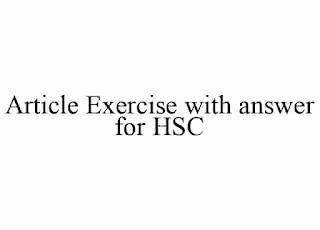Semantics Feature Analysis
In learning language, people sometimes find new word that has similar meaning with other. However, they often confuse when use it in their everyday life. The context of the words is different, but it looks same because people do not know it features/characteristics deeply.
👉To know the idea or the features / characteristics of the words is important to people, Particularly they who learn a new language.
👉Though a new word has a synonym or other words has meaning that similar with it, they can't used in a same situation.
👉Some words have deep meaning with others although it looks same. When people write a scientific paper for newspaper or study, they can not use word like in their daily life. They need word that has deeply content to represent what they want to say in their paper. That’s why to know other features of the words is important.
👉One way to know a content or other meaning of a word is by analyze the semantic features.
👉Semantic features sometimes mentioned as semantic properties.
👉Semantic properties mean the pieces of information of the word upon which speakers of the language agree. The meaning of all the “content words” and some of the “function words” can at least partially be specified by such properties.
👉Semantic properties or meaning properties are those aspects of a linguistic unit, such as a morpheme, word, or sentences, that contribute to the meaning of that unit.
👉Semantic features is more basic concepts/ideas that cannot be “defined” any further; primitive semantic elements.
👉Semantic features is one of a set of abstract elements, used systematically in various combinations to define individuals meanings or a set of meanings.
👉Semantic features sometimes used to describe the semantic components of a word, such as man assuming that the referent is human, male, and adult, or female being a common component of girl, woman, and actress.
👉In this sense, semantic properties are used to define the semantic field of a word or set of words. From definitions above, we conclude that semantic features is a set of some linguistic unit to define individuals meanings.
We can observe the semantic features by take an example, The assassin was stopped before he got to John. If the word assassin is in people mental dictionary, people know that it was some person who was prevented from murdering some important person named John.People knowledge of the meaning of assassin tells them that it was not an animal that tried to kill the man that John was not likely to be a little old man who owned a tobacco shop. In other words, people knowledge of the meaning of assassin includes knowing that the individual to whom the word refers is human, is a murderer, and is a killer of important people.
These pieces of information, then, are some of semantic properties of the word upon which speakers of the language agree. The meaning of all nouns, verbs, adjectives, and adverbs the “content words” and even some of the “function words” such as with, or over can at least partially be specified by such properties.
The same semantic property may be part of the meaning of many different words. “Female” is a semantic property that helps to define:
1. Actress -----Tigress -----Maiden -----Hen
2. Widow -----Debutante -----Mare -----Doe
3. Woman -----Girl ------Vixen ----Ewe
The words in the last two columns are also distinguished by the semantic property “human” which is also found in:
👉Professor--Dean--Doctor--Bachelor--Parent--Baby--Child
👉The last two of these words are also specified as “youn”’. That is, part of the meaning of the word baby and child is that they are “human” and “young”.
👉The meanings of words have other properties. The word father has the properties “male” and “adult”, as do man and bachelor; but father also has the property “parent”, which distinguishes it from the other two words.
👉Mare, in addition to “female” and “animal”, must also denote a property of “horseness”. Words have general semantic properties such as “human” or “parent”, as well as more specific properties that give the word its particular meaning.
👉The same semantic property may occur in words of different categories. “Female” is part of the meaning of the noun mother, of the verb breast-feed, and of the adjective pregnant.
“Cause” is a verbal property of Beautiful, Kill, dark and so on.
1. Beautify----cause to become beautiful
2. Kill-------------cause to day
3. Darken -----cause to become dark
Other semantic properties that help account for the meaning of verbs are as follows:
Semantic Property Verbs having it
1. motion--------------→Walk, Run, Fall, Bring, Plod...
2. contact ---------------------→Touch Kiss, Hit.....
3. creation--------------------→Imagine,Make, Build....
4. sense-------------------------→Feel, Hear, See...
For the most part no two words have exactly the same meaning. Additional semantic properties make for finer and finer distinctions in meaning. Plod is distinguished from walk by the property ‘slow’, and stalk from plod by the property such as ‘purposeful’.
We can then use this idea to describe part of the meaning of words as having either plus (+) or minus (-) that particular feature. The feature that the noun boy has is ‘+ animate’ (= denotes an animate being) and the feature that the noun hamburger has is ‘- animate’ (=denotes an inanimate being).
The above example is an illustration of a procedure for analyzing meaning in terms of semantic features. Features such as ‘+ animate, - animate’, ‘+ human, - human’, ‘+ female, - female’ for example, can be treated as the basic elements involved in differentiating the meaning of each word in a language from every other word.
Words may be in intersecting semantic classes. For example child is in the class “Young” woman is in the class with property “female” and girl is in the intersecting class with the two properties “Young and female.”
In addition to, there are semantic relations between words and certain semantic categories may imply others. For example, the property “human” implies “animate”.
This relationship can be expressed by semantic features, similar to phonetic features. In this case the lexical entries for words such as father, girl and mare would have the following (incomplete) appearance.
woman father girl mare (to) stalk
+female +male +female +female +motion
+human +human +human -human +slow
-young +parent + young -young +purposeful
… … … + horseness …
Intersecting classes share the same features, such as the class of human females, which are marked “plus” for the features human and female.
Additional fact, such as that “human” implies “animate”, could be stated using redundancy rules on these features, for example.
[+ human] --> [+ animate]
The rule means that if any word contains the feature [+ human], it “automatically” contains the feature [+ animate].
Therefore the feature [+ animate] need not be specifically mentioned in the lexical entry for father (or girl, professor, child); it can be inferred from the feature [+ human] by the redundancy rule.
Some semantic redundancy rules reveal “negative” properties. For example, if something is “human” it is not “abstract”; an activity that is “slow” is not “fast”. Thus we could state:
[+ human] --> [-abstract]
[+ slow ] --> [- fast]



